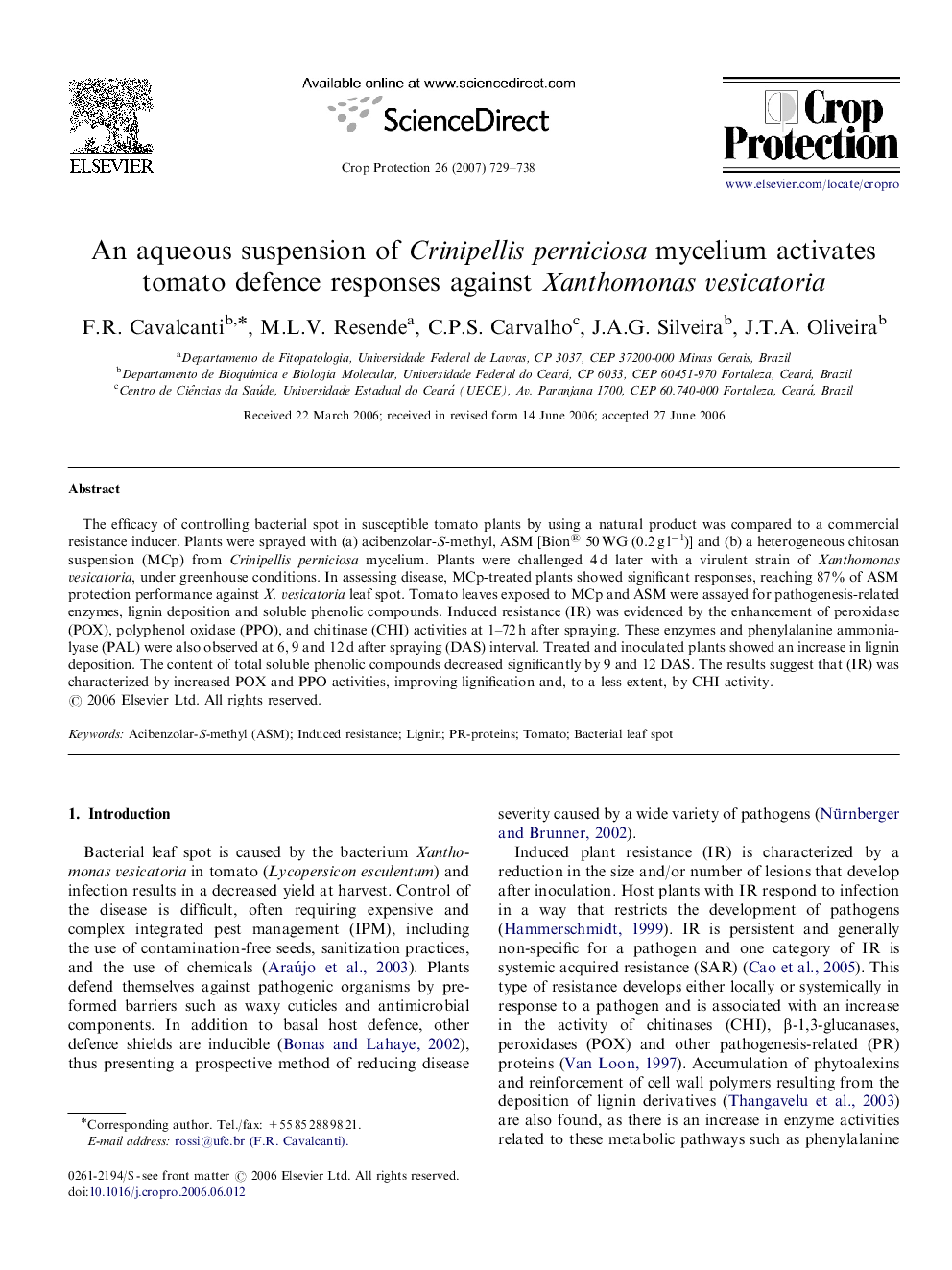| Article ID | Journal | Published Year | Pages | File Type |
|---|---|---|---|---|
| 4507226 | Crop Protection | 2007 | 10 Pages |
The efficacy of controlling bacterial spot in susceptible tomato plants by using a natural product was compared to a commercial resistance inducer. Plants were sprayed with (a) acibenzolar-S-methyl, ASM [Bion® 50 WG (0.2 g l−1)] and (b) a heterogeneous chitosan suspension (MCp) from Crinipellis perniciosa mycelium. Plants were challenged 4 d later with a virulent strain of Xanthomonas vesicatoria, under greenhouse conditions. In assessing disease, MCp-treated plants showed significant responses, reaching 87% of ASM protection performance against X. vesicatoria leaf spot. Tomato leaves exposed to MCp and ASM were assayed for pathogenesis-related enzymes, lignin deposition and soluble phenolic compounds. Induced resistance (IR) was evidenced by the enhancement of peroxidase (POX), polyphenol oxidase (PPO), and chitinase (CHI) activities at 1–72 h after spraying. These enzymes and phenylalanine ammonia-lyase (PAL) were also observed at 6, 9 and 12 d after spraying (DAS) interval. Treated and inoculated plants showed an increase in lignin deposition. The content of total soluble phenolic compounds decreased significantly by 9 and 12 DAS. The results suggest that (IR) was characterized by increased POX and PPO activities, improving lignification and, to a less extent, by CHI activity.
